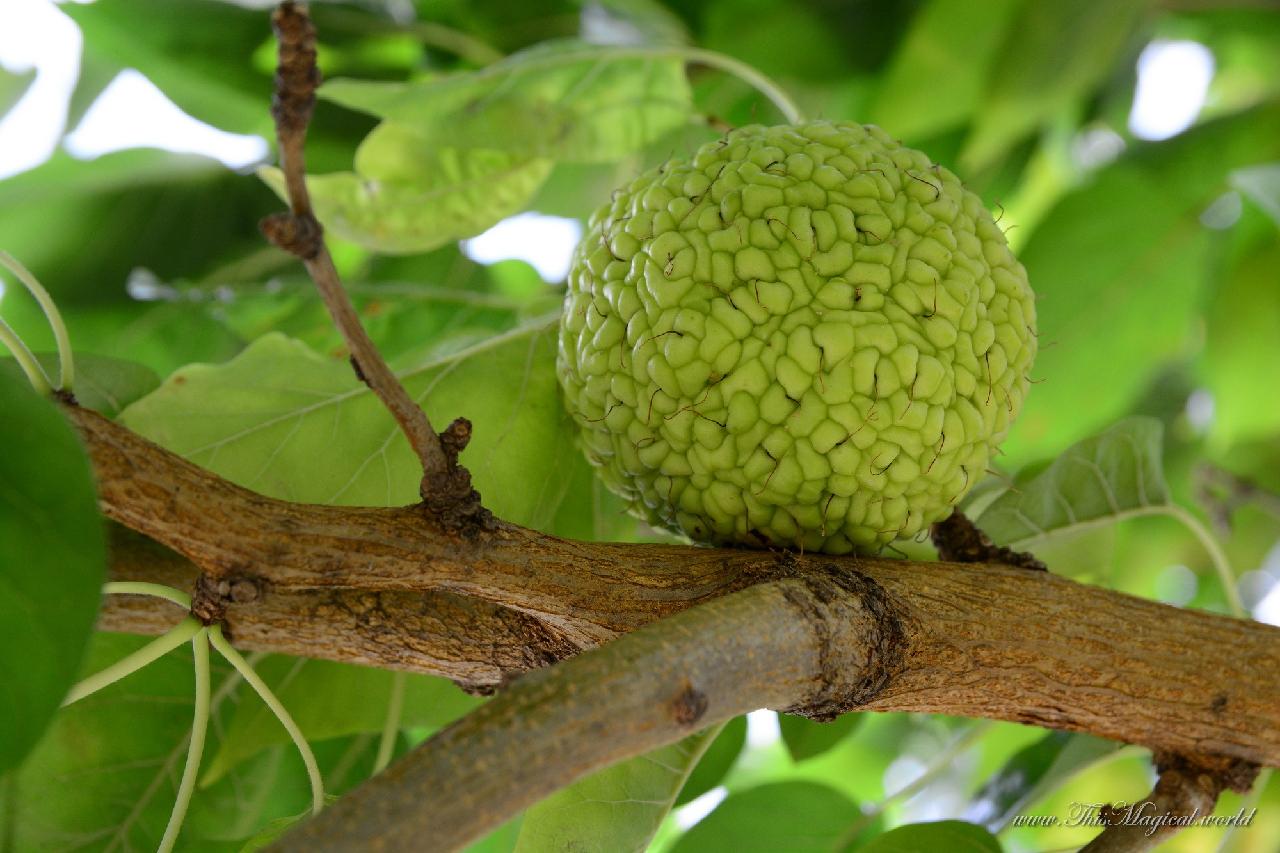
Osage orange, also known as hedge apple or by its botanical name Maclura pomifera, is a relatively small tree, that nowadays can be found in many regions of the world. It originates from the south-central United States. The name Osage derives from Osage Native Americans from whom young plants were first obtained. Despite the name, it is not related to the orange.
During the mid-nineteenth century, it was widely planted by Midwest farmers as a living fence. In 1934, a project called Great Plains Shelterbelt was launched in the United States to create windbreaks in the Great Plains states and thus battle dust storms, soil erosion and drought. 220 million trees were planted, with Osage orange being one of the primary trees.
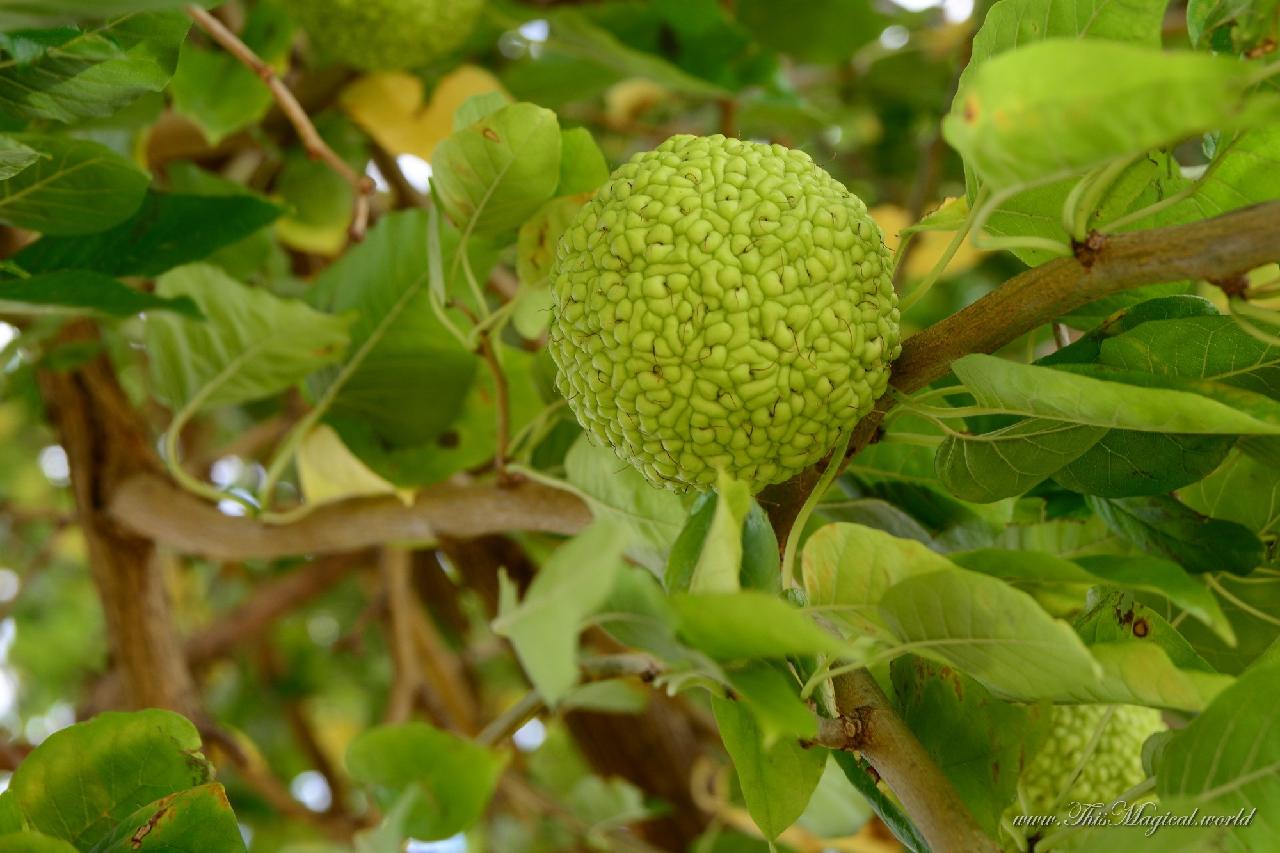
Its wood has many uses as it’s extremely hard and strong and withstands rot. Native Americans used the wood for war clubs and bow-making and valued it greatly. It is sometimes used for railway ties and fence posts. A yellow dye can be produced from the wood. Many archers consider the wood of the Osage orange to be the world's finest wood for bows.
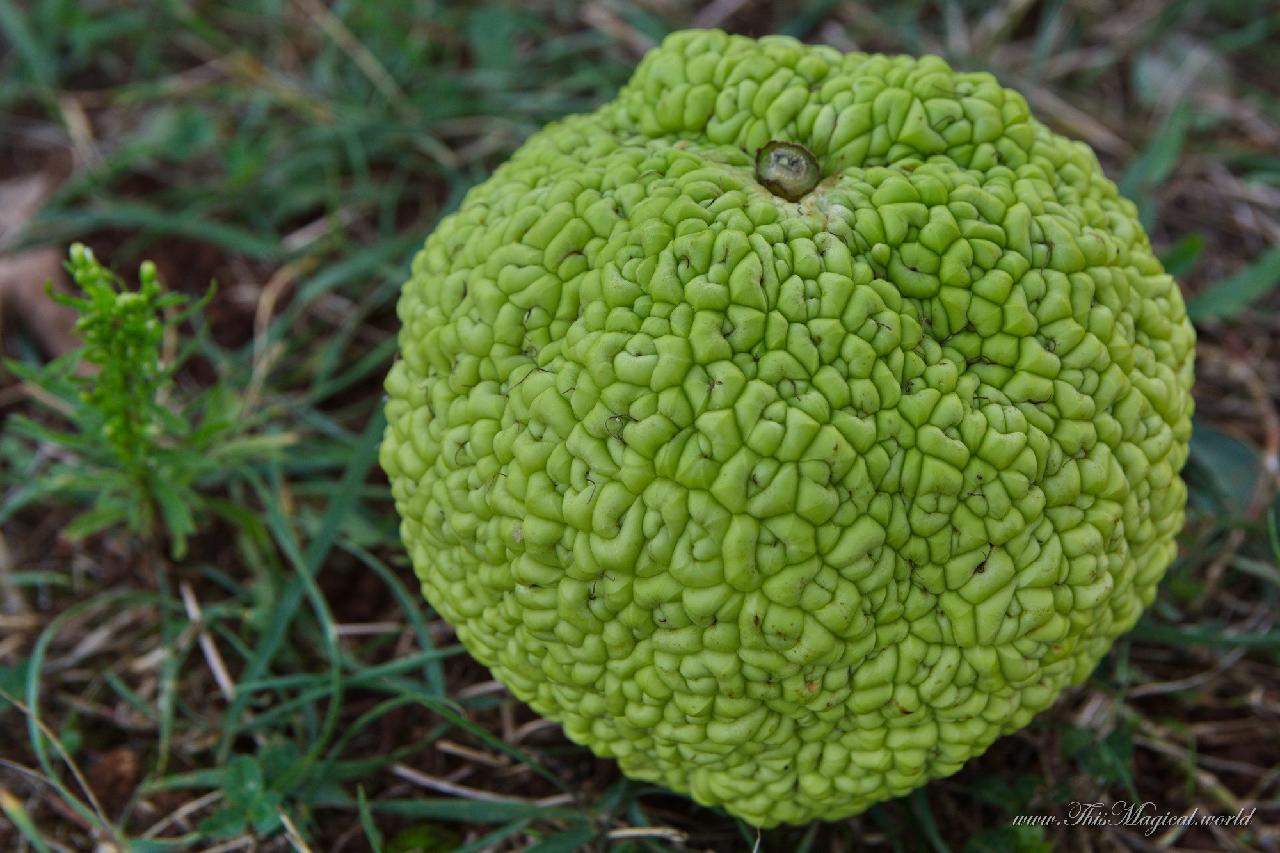
The tree produces large yellow-green wrinkled fruits, that often grow to more than 13 cm (5 in) in diameter. Although it is not poisonous, the fruit is not considered to be edible because of hard, dry texture and a sticky white latex inside that can cause skin irritation.
At some point, the fruits were thought to be an effective measure against insects. However, although insect deterrent components have been extracted from the fruits in laboratory studies, the amounts of these compounds were insignificant, and therefore, insecticidal properties of the Osage orange are a myth.
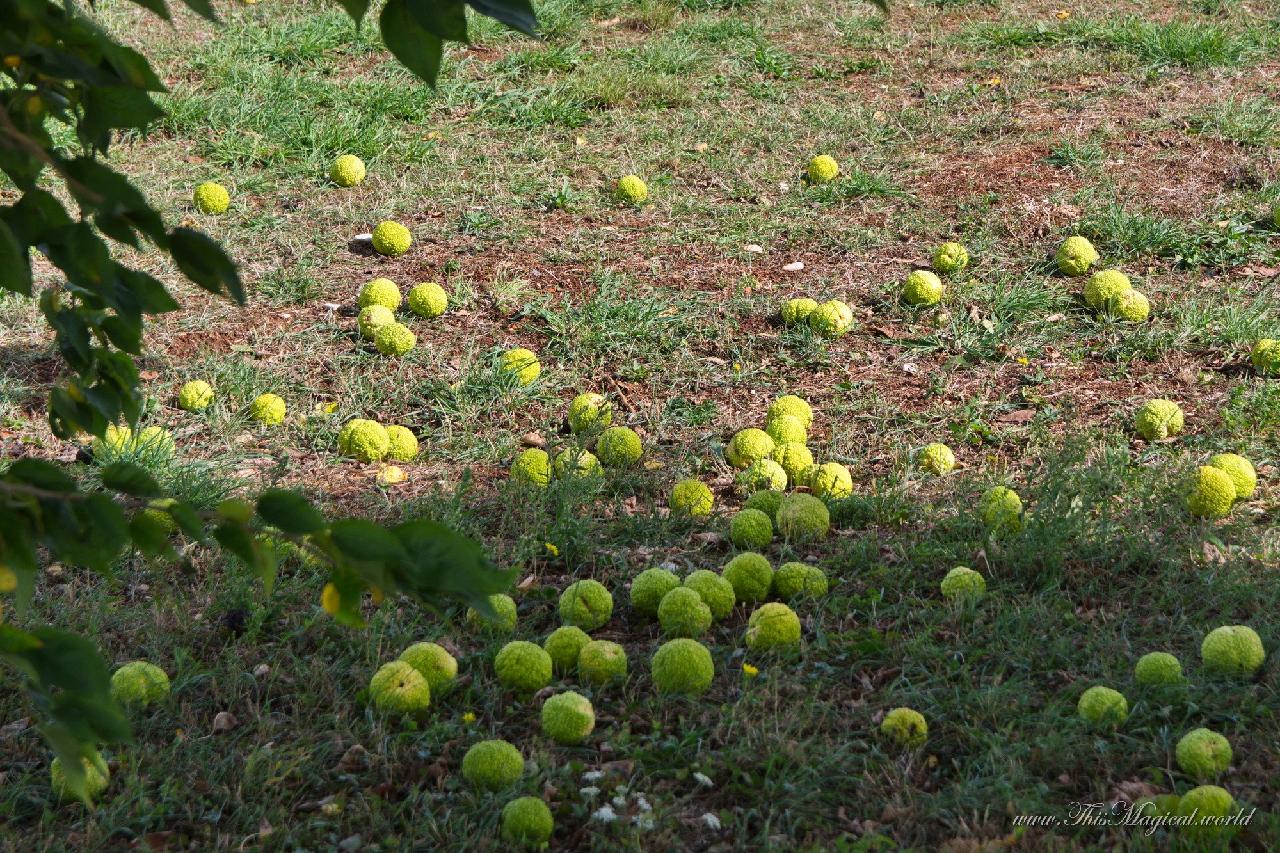
Animals rarely eat the fruit. Sometimes, horses and other livestock will consume it. Some animals eat seeds from the fruit. And that creates a mystery – trees make such fleshy fruits to entice animals to eat them, along with the seeds that contain them. The seeds pass through the animal and are deposited away from the parent tree. But no native animal eats Osage oranges, so the question is, what are they for? A 2015 study indicated the Osage orange seeds are not effectively spread by horses. It is therefore considered to be an evolutionary anachronism.
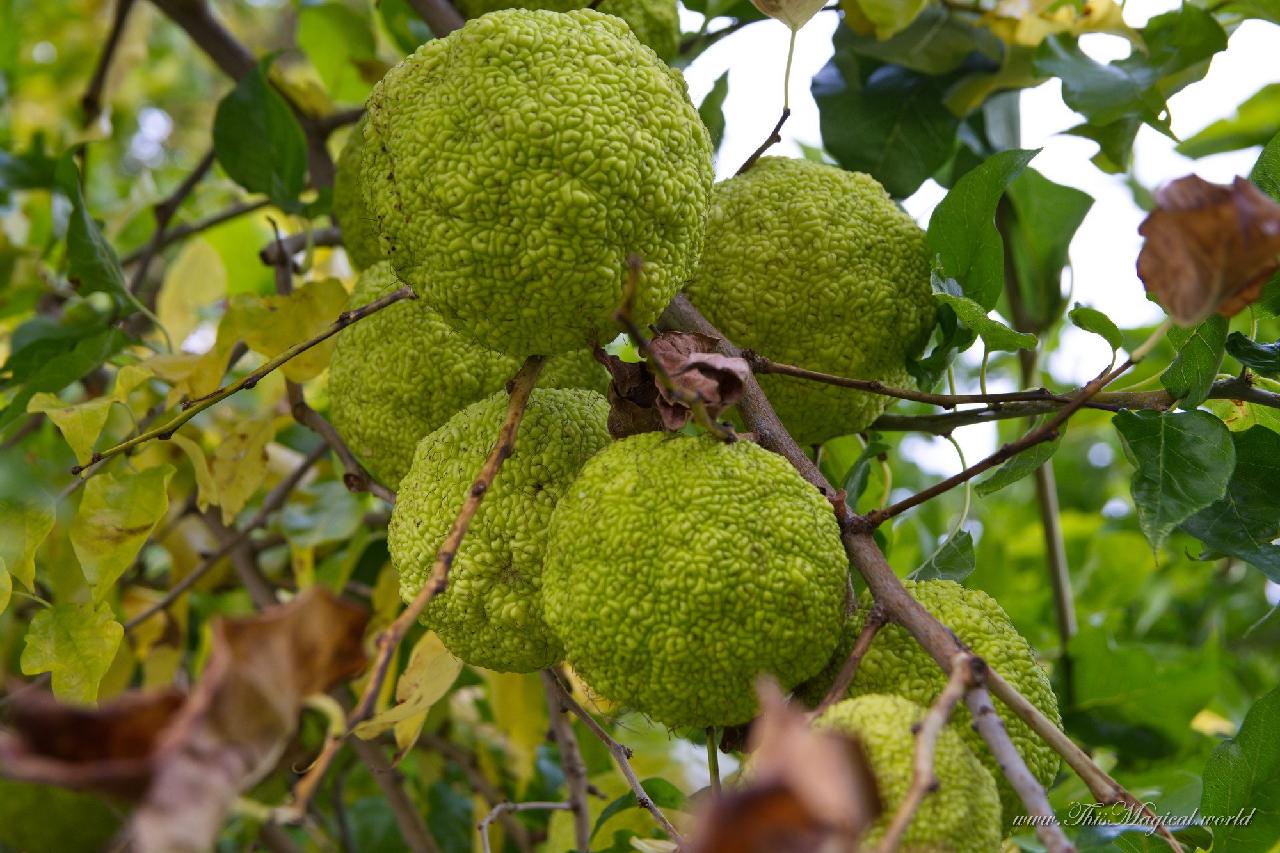
Anachronism means a thing, that belongs to a period other than that in which it exists. It is likely that now extinct giant ground sloths, mammoths, mastodons or gomphotheres fed on the fruit and aided in seed dispersal.
With that information in mind, it is likely, that many thousands of years ago, Osage oranges were not limited to south-central United states, but were much more widespread. In fact, fossils indicate that there were more species of the tree, that went extinct along with animals that were dispersing the seeds. An interesting article about this has been published in the American Forests Magazine -
The Trees That Miss The Mammoths
.
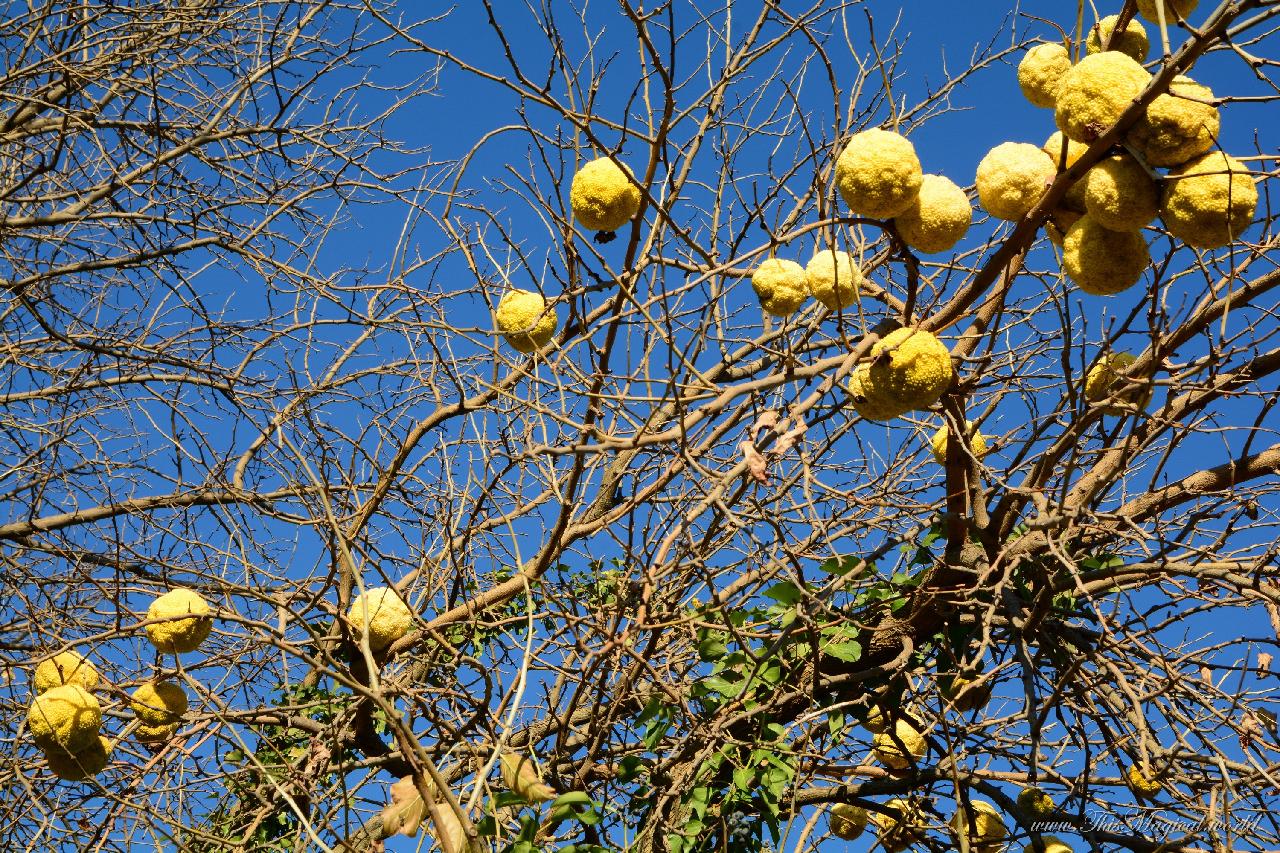 Osage Oranges in winter
Osage Oranges in winter
In late autumn – early winter, the fruits become bright yellow. They have a strong flowery smell. Inside the fruits there is a gluey substance. If you touch that substance, you will have to wash your hands with soap for at least 5 minutes to get the glue off your hands. The fruit is definitely not edible and has a very bitter taste.
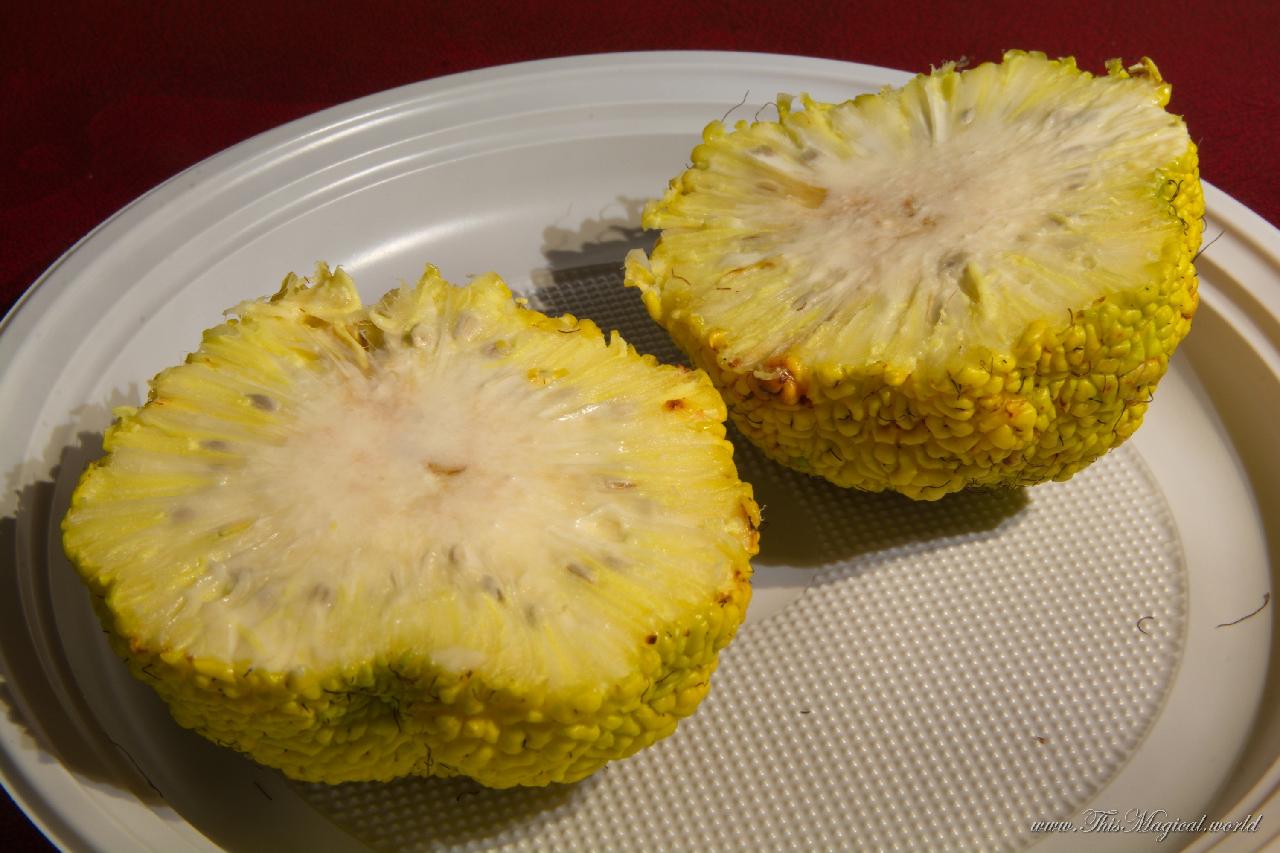 Osage Orange cut in half
Osage Orange cut in half
The photographs have been taken near Novigrad, Istria, Croatia in early October 2021 and late December of the same year.